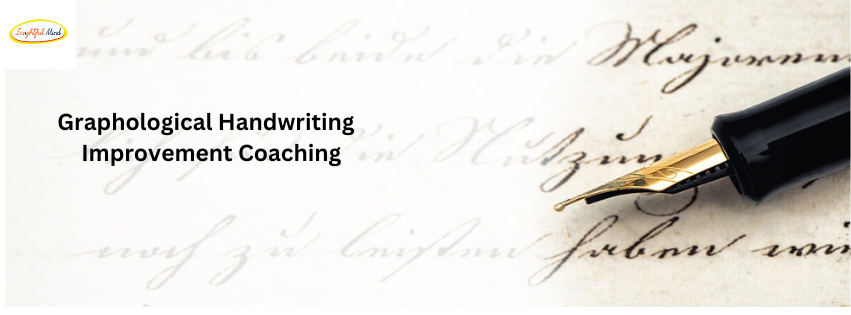The History and Evolution of Handwriting Analysis

Handwriting is more than just a means of communication it has long been considered a reflection of a person’s character, emotions, and inner thoughts. Over centuries, handwriting analysis, or graphology, has evolved into a unique blend of art and science that interprets the subtle nuances of handwriting to assess personality traits. From its ancient origins to its modern-day applications, graphology has come a long way.
For those exploring graphology handwriting analysis in Ahmedabad or considering its relevance in modern times, understanding the history and evolution of this fascinating discipline can provide a rich perspective. This blog will take you through the journey of handwriting analysis from its ancient roots to its modern-day applications.
The Ancient Origins of Handwriting Analysis
The practice of associating handwriting with personality traits can be traced back to ancient civilizations. Some of the earliest references to handwriting analysis come from ancient Chinese writings around 1000 BCE, where scholars began to observe links between handwriting styles and personality traits. This was one of the earliest acknowledgments that a person’s way of writing could be a reflection of their character.
In ancient Greece, philosophers such as Aristotle noted the connection between handwriting and human behavior, laying the groundwork for future study. He believed that one’s handwriting was directly influenced by their mental and emotional state, reflecting individual personality traits through writing styles and patterns.
These early observations, though not yet formalized into a system, highlighted that even ancient civilizations recognized handwriting as more than a mere tool for communication.
Formal Beginnings: The Birth of Graphology in the 17th Century
The more structured study of handwriting, known as graphology, began to emerge in the late 17th century. The Italian physician Camillo Baldi is credited with writing the first-known treatise on handwriting analysis in 1622. His book, titled How to Judge the Nature and Character of a Person from their Handwriting, laid the foundation for the formal practice of graphology, which would continue to develop in the centuries to follow.
Baldi’s work was one of the first scientific attempts to establish a method of analyzing handwriting. He suggested that the way letters are formed, the size of handwriting, and the slant of the letters could offer significant insights into a person’s mental and emotional state. Although rudimentary, Baldi’s work marked a crucial point in the history of handwriting analysis.
The Development of Modern Graphology in the 19th Century
The term “graphology” was officially coined in the mid-19th century by French abbé and scholar Jean-Hippolyte Michon, who is widely regarded as the father of modern graphology. Michon was fascinated by handwriting’s potential to reveal hidden psychological traits and devoted much of his life to studying it. He developed the first formal system for analyzing handwriting, creating a comprehensive catalog of specific strokes and shapes that corresponded to personality traits.
Michon’s work systematized graphology and laid the foundation for further study. However, it was his student, Jules Crépieux-Jamin, who expanded Michon’s ideas and developed the field into a full-fledged science. Crépieux-Jamin’s detailed research in the late 19th century focused on the overall form and structure of handwriting, rather than just individual strokes, which broadened the scope of graphology significantly.
The 19th century was a critical period for the development of graphology, with scholars across Europe contributing to its growth. During this time, the field gained recognition in countries like France, Germany, and Italy, making its way into different sectors such as education, business, and even law.
Today, graphologists in India, including those offering graphology handwriting analysis in Ahmedabad, continue to build upon these foundational principles, using handwriting to provide deep insights into human behavior.
The Evolution of Graphology in the 20th Century
The 20th century saw graphology evolve further, with new ideas and applications emerging around the world. Ludwig Klages, a German philosopher and psychologist, played a key role in advancing the field. He introduced the concept of “expressive movement,” suggesting that handwriting is a direct extension of one’s personality, akin to body language. Klages viewed handwriting as a holistic reflection of the mind and believed that graphology could be used as a psychological tool.
Around the same time, graphology gained a following in the United States, where it began to be used for personal and professional purposes. Businesses started using graphology in recruitment, helping employers evaluate potential candidates by examining their handwriting for traits like reliability, ambition, and creativity.
The rise of forensic science also contributed to graphology’s popularity in the 20th century. Handwriting analysis became an essential tool in criminal investigations, helping to determine the authenticity of documents, wills, and signatures. This forensic aspect of graphology has been especially useful in legal disputes and criminal cases.
Even today, graphology analysis in Gujarat and other regions plays a vital role in criminal investigations, recruitment, and personal development, reflecting the continued evolution of this ancient practice.
Graphology in the Digital Age
With the advent of technology and the decline of handwritten communication, one might assume that graphology would lose its relevance. However, the practice has adapted and continues to find applications in the digital age. While we may type more often than write by hand, handwriting is still a part of many official documents and personal communications.
In countries like India, where handwritten notes, legal signatures, and forms still hold significant importance, graphology remains relevant. Professionals offering graphology handwriting analysis in Ahmedabad have adapted their methods to meet contemporary needs, offering services for recruitment, psychological counseling, and forensic investigations.
Moreover, the growing interest in self-awareness and personal development has led individuals to seek graphology as a tool for self-reflection. Today, many professionals and individuals alike view handwriting analysis as a complementary tool to modern psychological assessments.
The Application of Graphology Today
Graphology is still widely used in various sectors across the globe. In India, graphology analysis in Gujarat and other regions continues to be popular, offering valuable insights in areas such as:
-
Recruitment: Businesses use graphology to evaluate job candidates by assessing their personality traits. Handwriting can help employers determine whether a candidate is a good fit for a particular role or the company’s culture.
-
Forensics: Handwriting analysis is often used in forensic document examination to authenticate signatures, wills, or any handwritten documents, making it a crucial tool in legal cases.
-
Personal Development: Individuals use graphology for self-reflection and growth. Understanding your handwriting’s unique features can provide insights into your personality, behavior, and emotions, helping in personal development and life choices.
-
Therapy and Counseling: Graphology is also used by some therapists to gain a deeper understanding of their clients’ emotional states, cognitive processes, and psychological conditions.
-
Relationships: Graphologists can compare the handwriting of couples to identify compatibility and areas where they might need improvement in their relationship dynamics.
The Future of Handwriting Analysis
As technology continues to evolve, so too will graphology. The digital world might shift communication from pen and paper to screens, but the need for signatures, personal notes, and handwritten documents will likely remain, keeping graphology relevant.
Handwriting analysis has adapted to cultural changes, and its versatility allows it to find new applications in both personal and professional contexts. In India, particularly in graphology handwriting analysis in Ahmedabad, the practice is continuing to thrive, offering a blend of traditional wisdom and modern insights.
Whether you’re interested in forensic document examination, hiring the right employee, or gaining a deeper understanding of yourself, graphology will continue to be a tool that bridges the ancient and the modern, offering unique insights into human nature.

